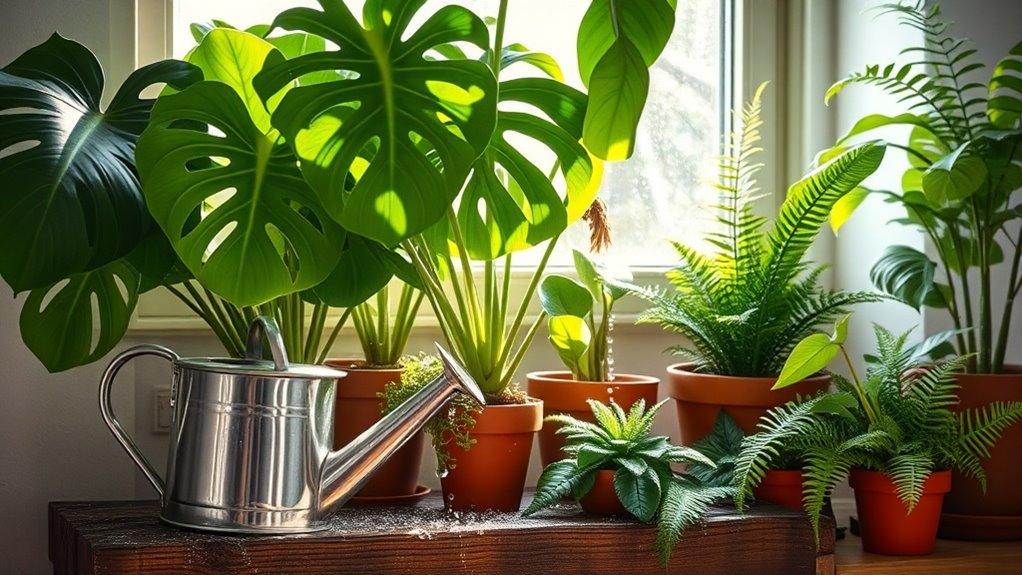My Indoor Plant Routine That Keeps Everything Green and Growing
You might think caring for indoor plants is complicated, but it’s quite manageable with a systematic approach. By understanding each plant’s light, water, and nutrient needs, you can set them up for success. Placing them in the right spots and maintaining optimal humidity is crucial. Once you grasp these basics, you can move on to establishing a proper watering schedule and ensuring their overall health. The best practices follow, ensuring your plants stay vibrant and thriving.
Understanding Your Plants’ Light Needs
When you’re choosing indoor plants, it’s crucial to understand your plants’ light needs, as they directly impact their health and growth. Each species has different requirements, from low light to bright, indirect sunlight. Incorporate this knowledge into your indoor care routine by placing plants in appropriate locations. This ensures optimal photosynthesis, ultimately leading to thriving foliage and vibrant blooms. Additionally, consider the specific humidity requirements of each plant to create an environment that supports their growth.
Establishing a Watering Schedule
After positioning your plants based on their light needs, the next step involves establishing a consistent watering schedule.
Observe each plant’s moisture requirements; this varies by species. Generally, water when the top inch of soil feels dry. Use a moisture meter if uncertain.
Adjust frequency based on seasonal changes, humidity levels, and pot size to prevent overwatering or underwatering. Additionally, be mindful of optimal plant health as it is crucial for ensuring their thriving growth.
Nutrient Management and Fertilization
While indoor plants can thrive on the nutrients present in potting soil, regular fertilization is essential for their optimal growth and health.
You should use balanced fertilizers containing nitrogen, phosphorus, and potassium every four to six weeks during the growing season. Liquid or slow-release options work well.
Always follow the manufacturer’s instructions to avoid nutrient burn and ensure suitable nutrient availability. Additionally, incorporating organic fertilizers into your routine can enhance soil health and promote long-term growth.
Pest Control and Plant Health Monitoring
To maintain healthy indoor plants, you must prioritize pest control and regular health monitoring.
Inspect your plants weekly for signs of pests, such as webbing or discoloration. Utilize insecticidal soap or neem oil for treatment, targeting affected areas directly.
Keep a log of your plants’ health trends, noting any changes in appearance or growth, ensuring timely intervention for potential issues. Additionally, maintaining optimal light conditions is crucial in preventing stress that can attract pests.

